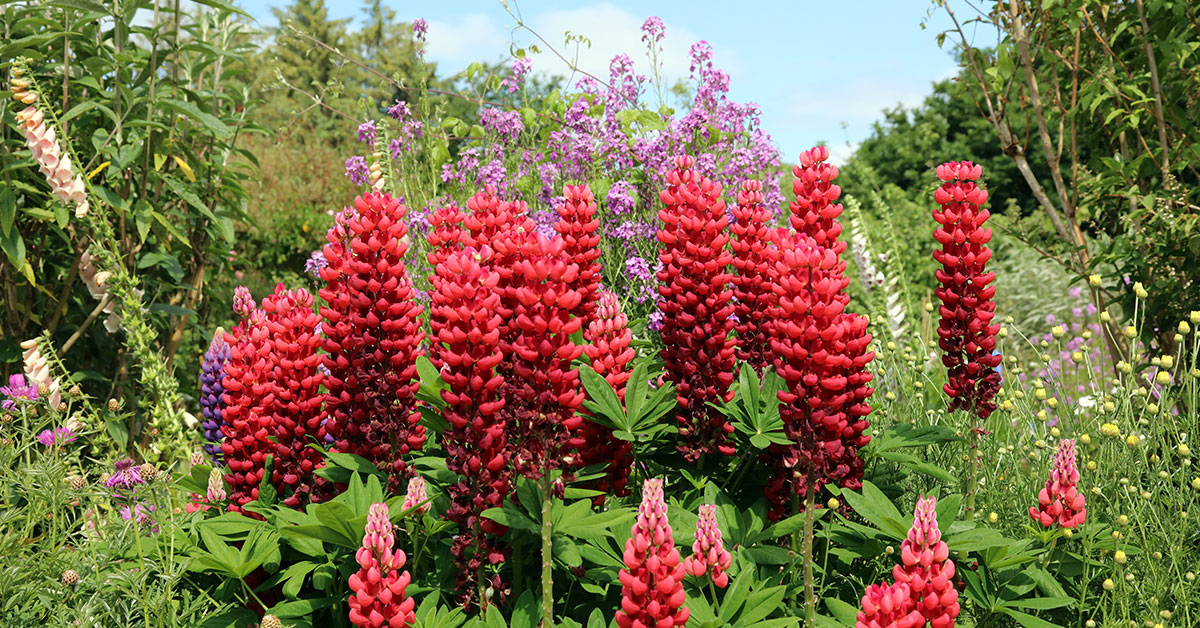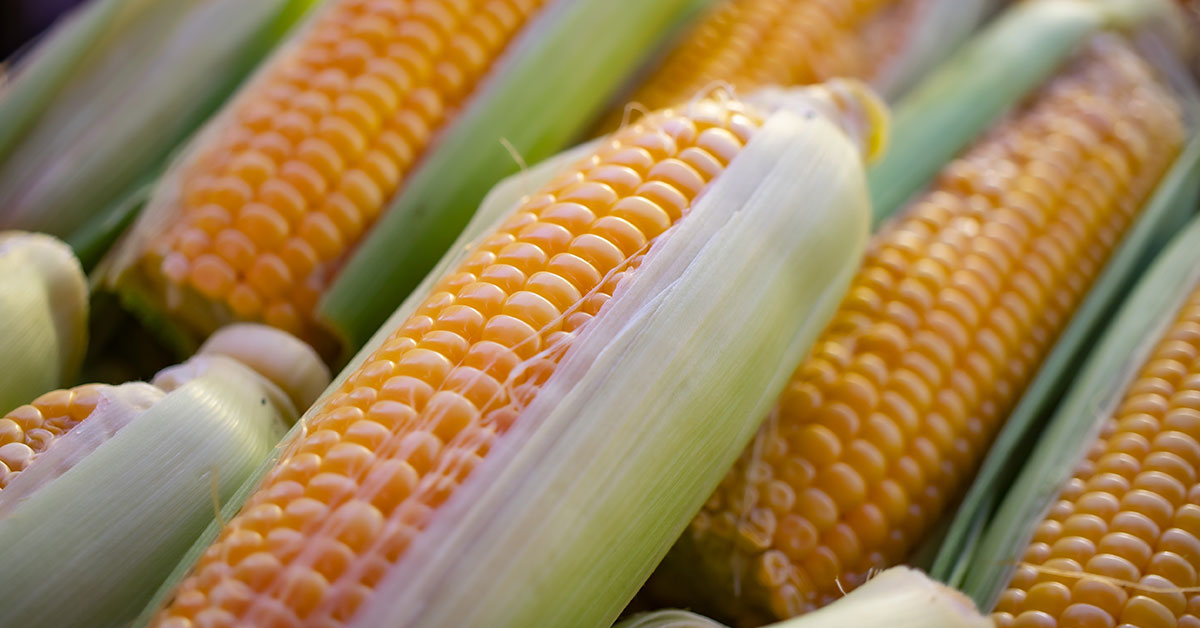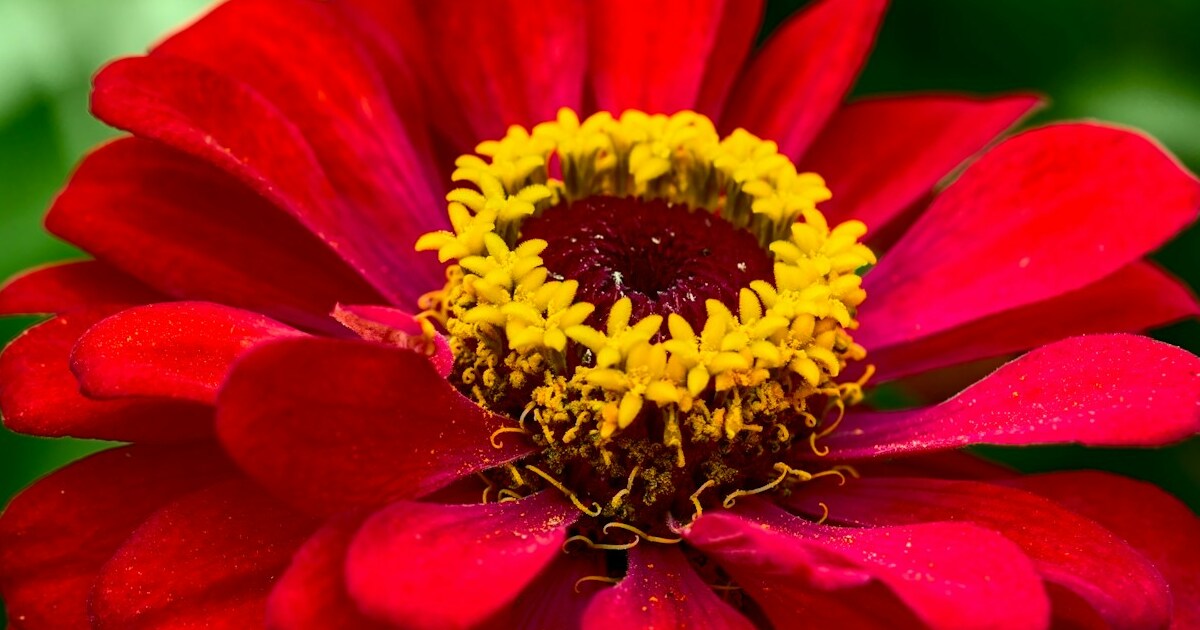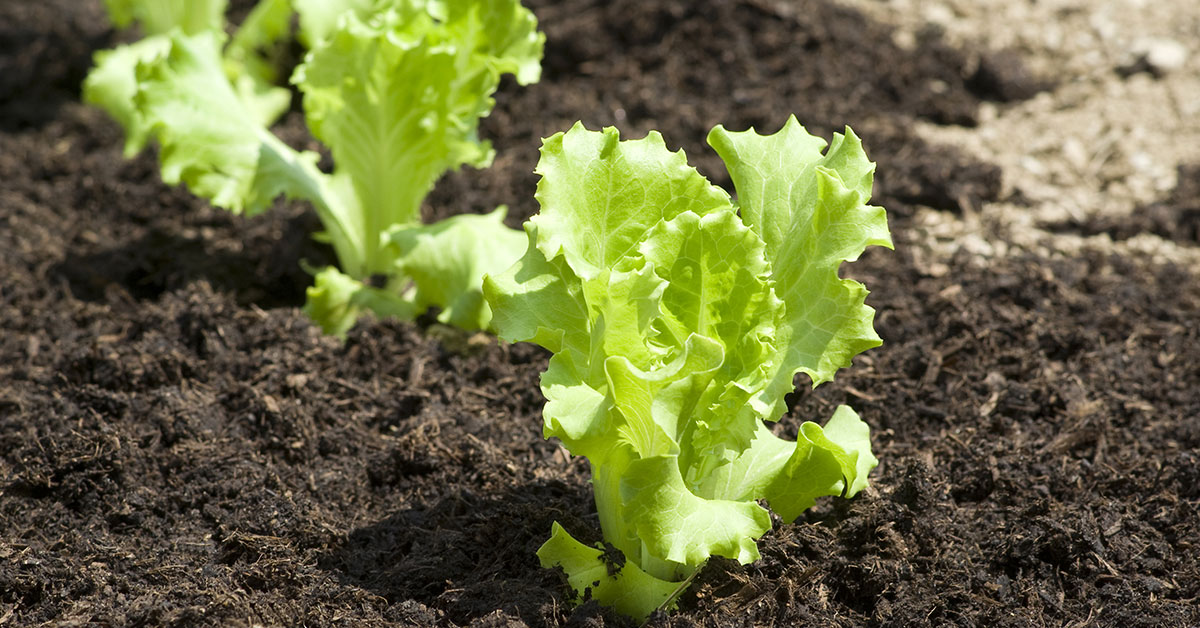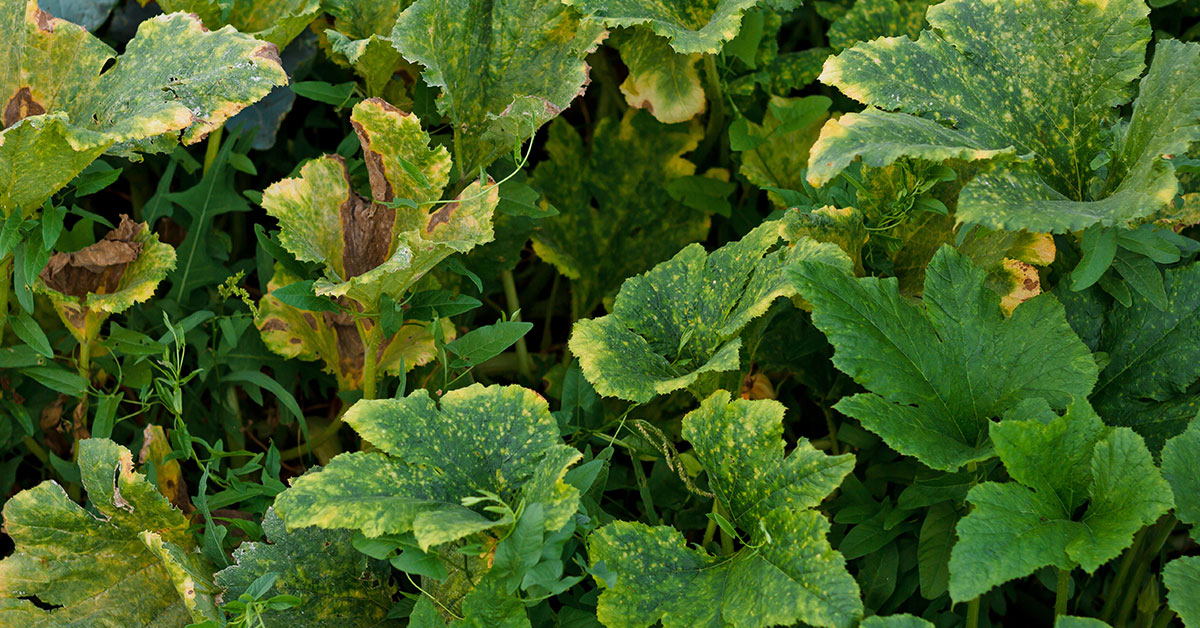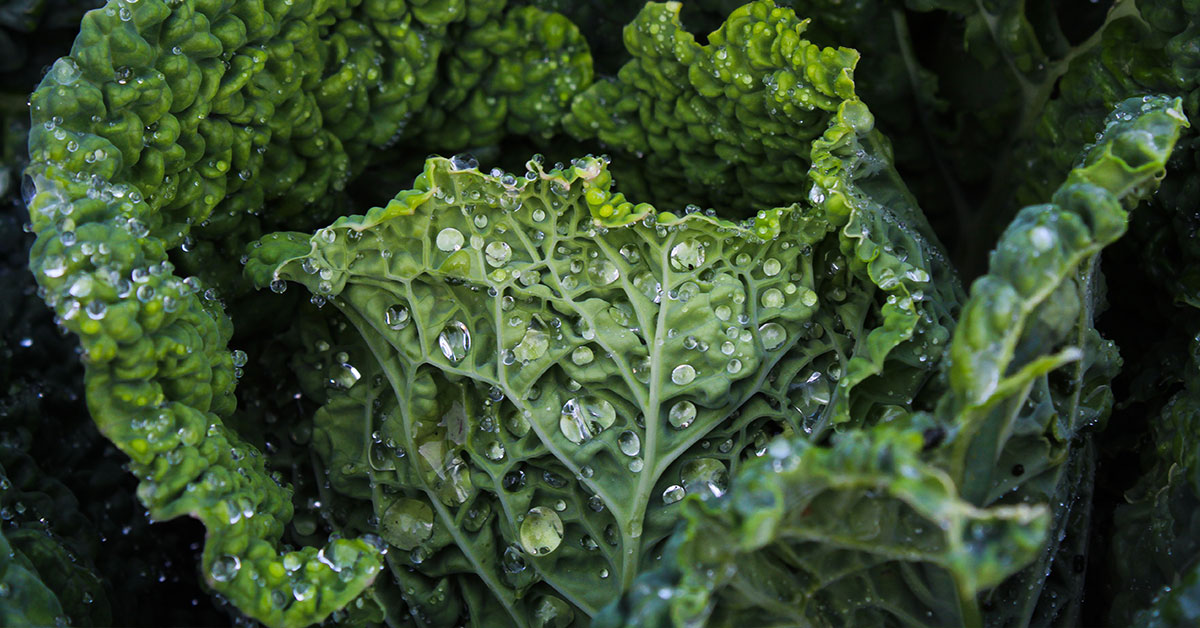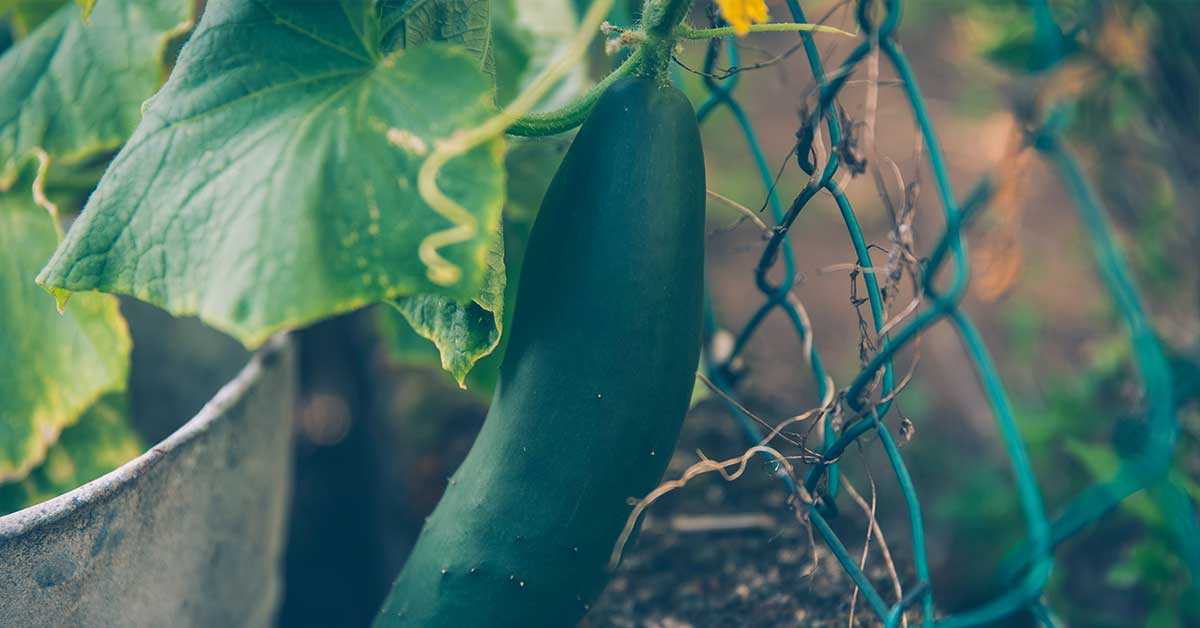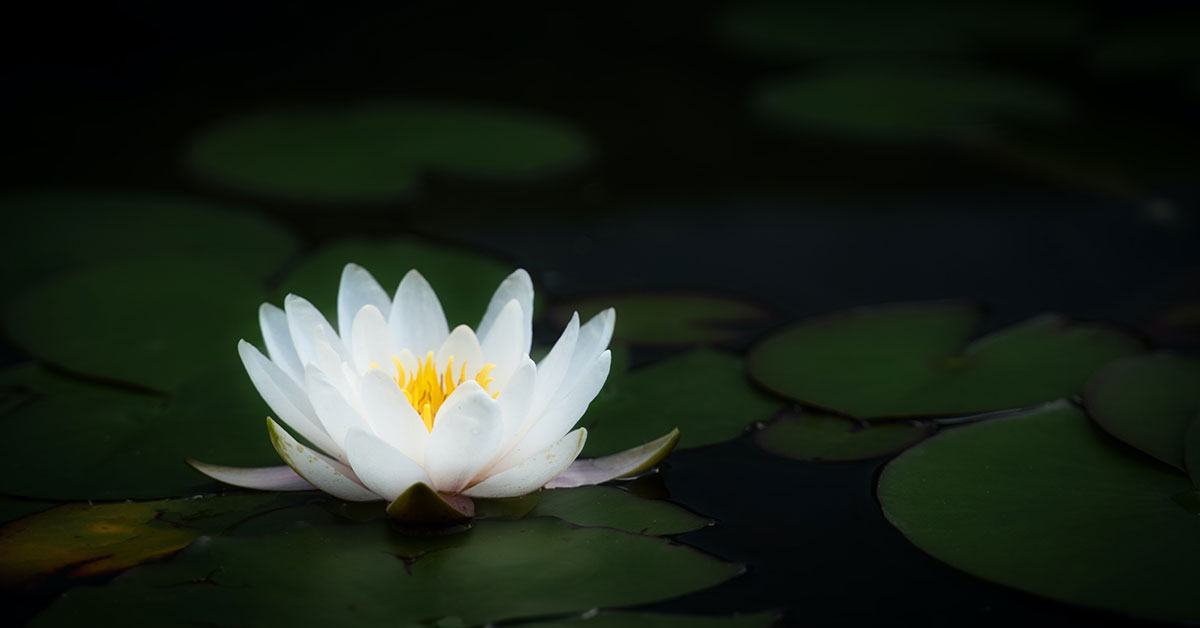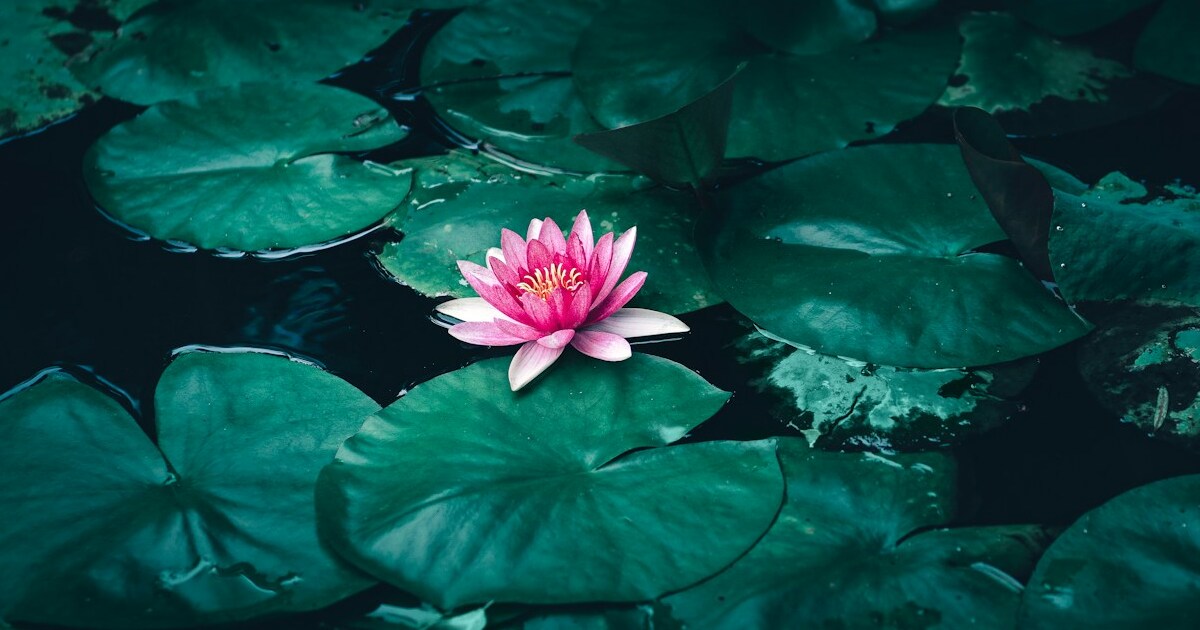As a gardener who’s faced the frustration of erosion and bare patches on steep hillsides, I know how disheartening it is when your hard work is compromised by shifting soil and invasive weeds. It’s such a bummer when your slopes fail to support life the way you envisioned. That’s why I’ve spent years exploring resilient, low-maintenance plants that not only hold the soil but also create vibrant, balanced ecosystems. In this article, I’m thrilled to introduce you to 13 exceptional plants that are perfect for steep slopes—each with fascinating native origins, unique growth behaviors, and even the bonus of attracting beneficial insects that sometimes use their structures for nesting or shelter!
Throughout my gardening journey, I’ve learned that diversity and smart choices are the keys to a garden that flourishes in all conditions. These 13 plants come from varied parts of the world—some hailing from sun-drenched Mediterranean regions, others from temperate woodlands—and each is chosen for its ability to thrive on slopes while being non-invasive and supportive of a healthy ecosystem.
Creeping Juniper
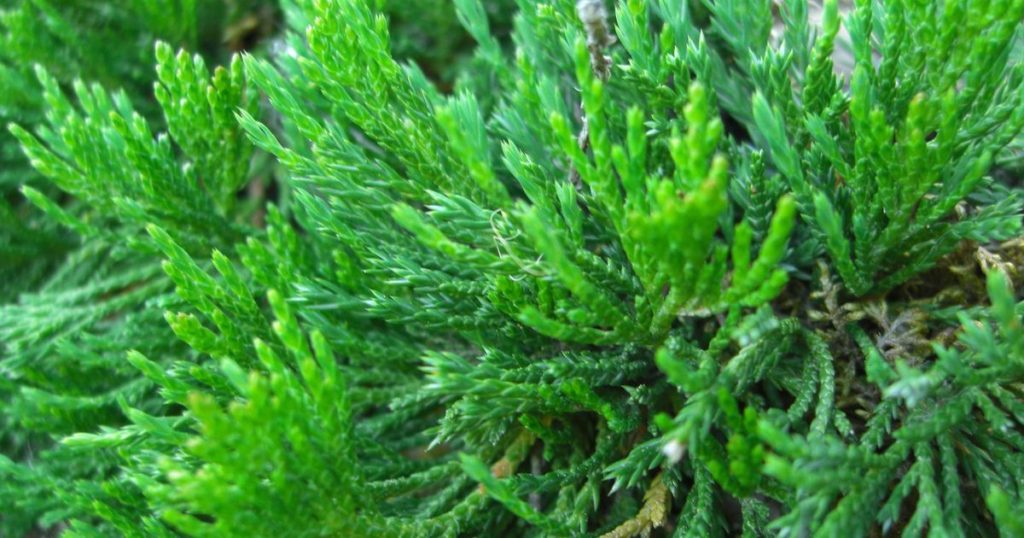
Creeping Juniper (Juniperus horizontalis) is a hardy evergreen that works wonders for soil stabilization on steep slopes. Native to North America, it thrives in full sun and well-drained soils, making it ideal for rocky, inclined terrains. I’ve always been impressed by how its sprawling, needle-like foliage forms a dense, mat-like cover that not only prevents erosion but also creates a natural habitat for small beneficial insects. These tiny creatures often seek refuge in the cool crevices between its branches, helping to maintain a balanced garden ecosystem!
The non-invasive nature of Creeping Juniper ensures that it stays contained, even on challenging slopes, without overtaking neighboring plants. Its rugged beauty and low-maintenance requirements make it a favorite for gardeners who need a reliable solution for steep areas. Whether you’re looking to soften rocky outcrops or add year-round greenery, this juniper is a practical and attractive choice that stands the test of time!
Sedum (Stonecrop)
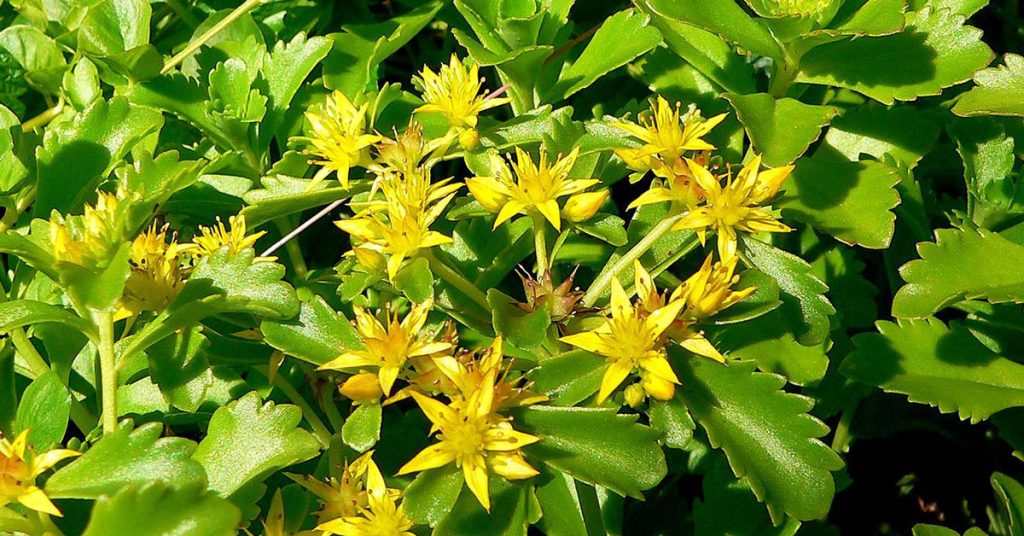
Sedum, commonly known as Stonecrop, is a succulent groundcover that excels in dry, rocky soils, making it perfect for steep slopes. Native to various temperate regions of Europe and Asia, sedum thrives in full sun with minimal water, storing moisture in its fleshy leaves. I love how its star-shaped flowers attract tiny bees and other beneficial insects, which often use the compact clusters as temporary nesting sites. Its vibrant hues add a pop of color to otherwise harsh landscapes!
What I appreciate most about sedum is its non-invasive spreading habit, which creates a natural, low-maintenance carpet over challenging terrain. This resilience, paired with its ability to thrive in poor soils, makes it an excellent erosion control option. For anyone struggling with steep slopes that seem impossible to cover, sedum offers both beauty and practicality—a true testament to nature’s ingenuity!
Creeping Phlox

Creeping Phlox (Phlox subulata) is a delightful perennial groundcover that carpets slopes with a burst of vibrant color. Native to North America, it flourishes in full sun and well-drained soils, forming dense mats that help hold the soil together. I’ve been amazed at how its profuse, low-growing habit not only suppresses weeds but also attracts butterflies and bees, which sometimes use the soft, velvety mat for brief nesting or foraging breaks. Its array of colors—from soft pinks to bold purples—adds a whimsical touch to rugged slopes!
The beauty of Creeping Phlox lies in its ability to naturalize quickly without being invasive. Its compact growth provides excellent erosion control while offering a delightful sensory experience with each bloom. For gardeners looking to add a splash of springtime color and ecological balance to steep areas, Creeping Phlox is an inspiring and reliable choice!
Ajuga (Bugleweed)

Ajuga, commonly known as Bugleweed, is a vigorous groundcover that delivers a striking display of deep green or burgundy foliage paired with delicate flower spikes. Native to Europe, this plant thrives in moist, partially shaded conditions, making it ideal for slopes with varying light levels. I’m always impressed by how Ajuga attracts beneficial insects like bees and butterflies, some of which even explore its dense clusters for shelter or nesting! Its cascading habit creates a natural barrier that helps prevent soil erosion.
Despite its robust growth, Ajuga remains relatively non-invasive when properly managed, making it perfect for filling in gaps on steep terrains. Its bold colors and textured leaves add both visual interest and functional ground cover, enhancing the overall resilience of your landscape. For gardeners in need of a dependable, colorful groundcover that supports a healthy ecosystem, Bugleweed is a superb, multifaceted option!
Vinca Minor (Periwinkle)
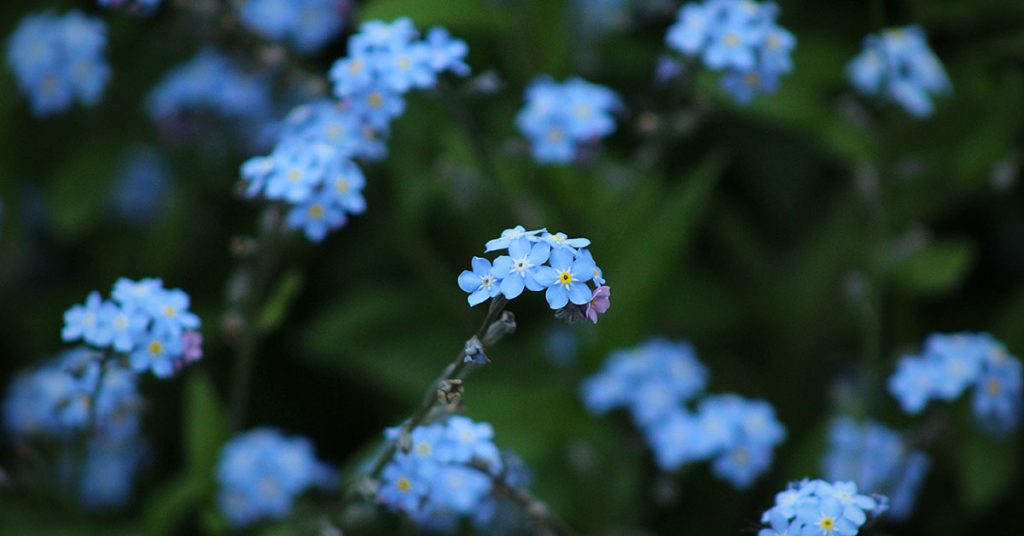
Vinca Minor, or Periwinkle, is a charming evergreen groundcover that thrives in partial shade and well-drained soils, making it a solid choice for stabilizing steep slopes. Native to Europe, this plant forms a dense, carpet-like layer of glossy foliage that can effectively suppress weeds and reduce soil erosion. I love how its star-shaped blue or purple flowers attract small bees and butterflies, some of which use the tight clusters as temporary nesting sites during cooler days!
Its non-invasive growth habit ensures that Vinca Minor stays in its place without overtaking other plantings, making it ideal for maintaining a tidy, controlled garden. The vibrant contrast of its leaves and blooms against rugged terrain adds a refreshing burst of color to otherwise stark slopes. For anyone looking for an attractive, low-maintenance groundcover that supports beneficial insect activity, Vinca Minor is a proven and delightful option!
Wild Ginger

Wild Ginger (Asarum canadense) is a subtle yet invaluable groundcover that thrives in moist, shaded conditions, perfect for the understory of steep, forested slopes. Native to eastern North America, wild ginger features heart-shaped leaves and an earthy aroma that helps repel certain pests while attracting beneficial insects such as ground beetles. I’m always delighted by how its low, spreading habit creates a soft, natural carpet that not only stabilizes the soil but also brings a hint of woodland charm to your garden!
The non-invasive nature of Wild Ginger makes it an excellent choice for naturalizing areas where erosion is a concern without crowding out other species. Its delicate blossoms and understated beauty provide a gentle counterpoint to more vigorous plants, creating a balanced, ecological understory. For gardeners looking to infuse their slopes with a touch of native forest magic, wild ginger is an understated yet effective solution!
Daylilies
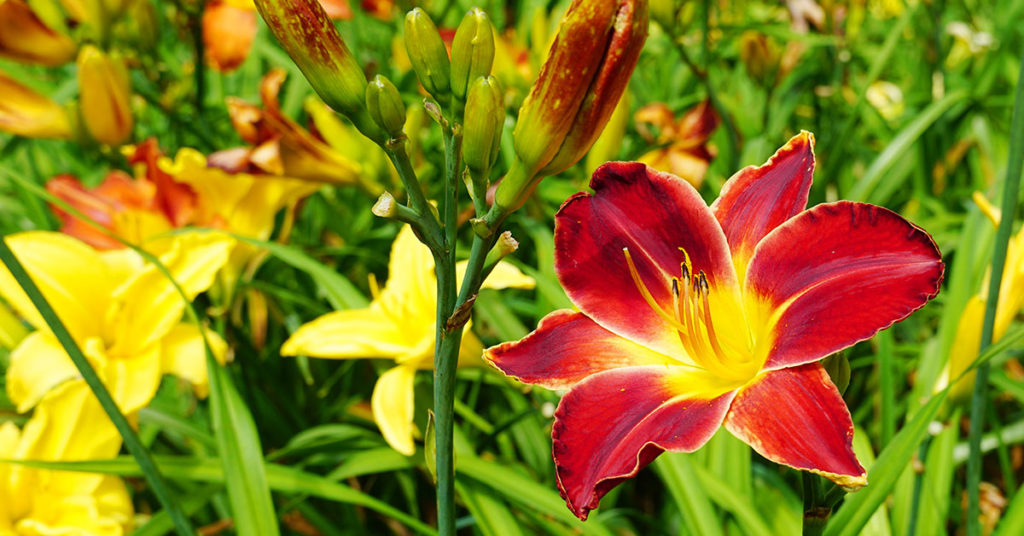
Daylilies (Hemerocallis) are a perennial powerhouse known for their vibrant, trumpet-shaped flowers that bloom in succession throughout the summer. Native to Asia, they thrive in full sun and a variety of soil types, making them incredibly versatile for steep slopes. I’m always amazed by how their clump-forming habit not only stabilizes the soil but also creates pockets of color that attract butterflies and bees—beneficial visitors that sometimes use the dense foliage as a makeshift resting area!
Their low-maintenance, non-invasive growth ensures that daylilies naturalize well without overtaking the landscape, offering continuous seasonal charm and ecological balance. Whether planted in mass for dramatic impact or interspersed with other species, daylilies bring both resilience and vibrant beauty to challenging terrains. For anyone looking for a dependable, eye-catching plant to enliven a slope, daylilies are an exceptional and time-tested choice!
Coreopsis (Tickseed)
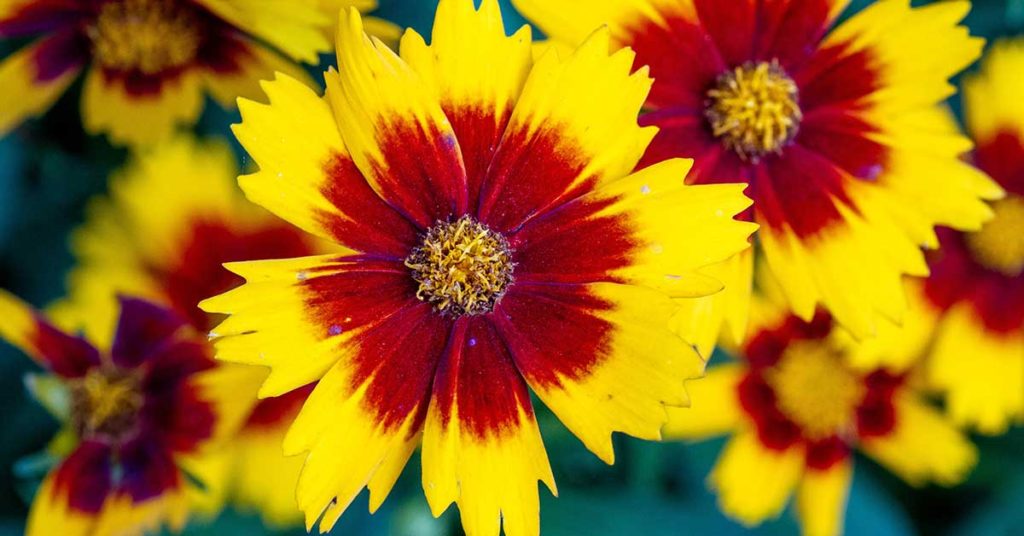
Coreopsis, also known as Tickseed, is a sun-loving perennial that bursts into radiant yellow or orange blooms, ideal for brightening up steep slopes. Native to North America, this hardy plant thrives in full sun and well-drained soils, where its sprawling, non-invasive habit naturally combats erosion. I love how its daisy-like flowers attract an array of beneficial insects such as bees and butterflies, which sometimes even use the dense clusters as brief nesting spots during their foraging excursions!
Its ability to thrive with minimal care makes Coreopsis a favorite for gardeners who want instant color and practical ground cover. The cheerful blossoms and robust growth create a living mosaic that uplifts even the most challenging landscapes. For anyone looking to inject warmth and natural vibrancy into a sloped area, Coreopsis is a radiant, reliable option that never fails to impress!
Black-eyed Susan
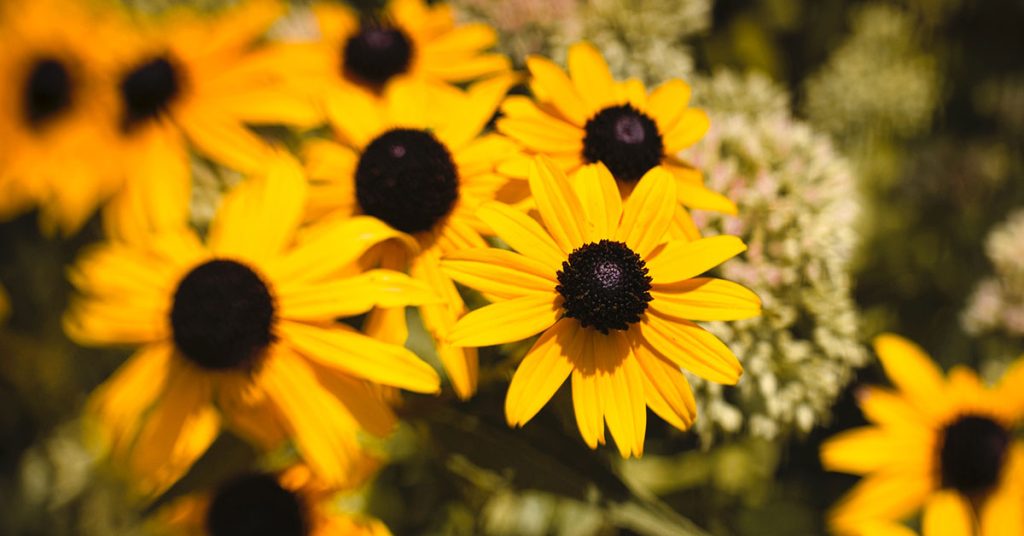
Black-eyed Susan (Rudbeckia hirta) is a robust perennial renowned for its radiant yellow petals and contrasting dark centers, making it a classic choice for sloped gardens. Native to North America, it thrives in full sun and well-drained soils, where its natural, clumping growth habit effectively combats erosion. I’m always excited by how its bold, daisy-like blooms attract beneficial pollinators such as bees and butterflies, some of which even find the dense foliage a perfect spot for temporary nesting!
The non-invasive nature of Black-eyed Susan ensures that it forms attractive natural clusters without overwhelming other plantings. Its cheerful, long-lasting flowers add a burst of energy to any slope, transforming barren areas into lively, ecological displays. For gardeners seeking a plant that is as functional as it is beautiful, Black-eyed Susan is a timeless choice that brightens up landscapes with minimal fuss!
Lupine
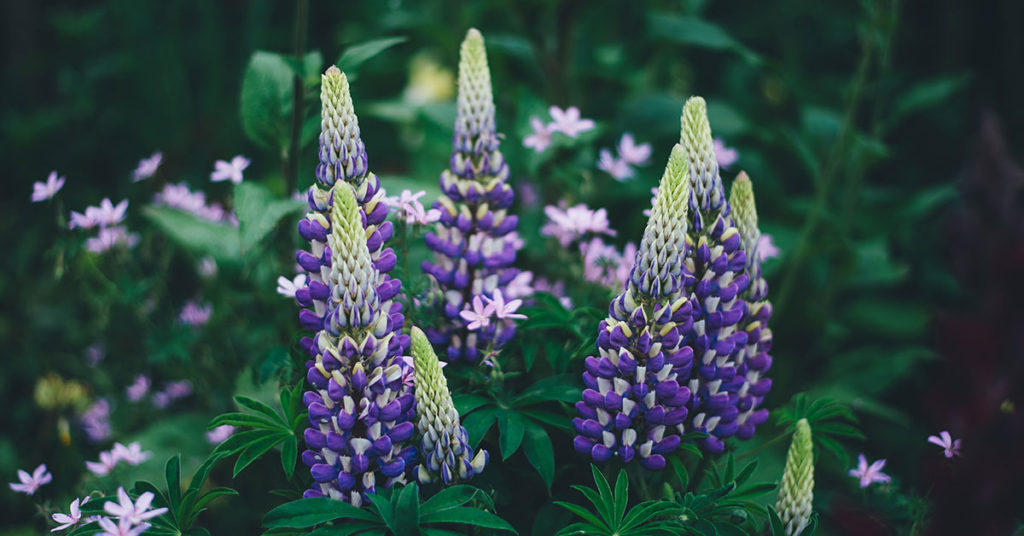
Lupine is a striking perennial that stands out with its tall, spiky inflorescences and lush, fern-like foliage, making it a superb addition to steep slopes. Native to North America, lupine thrives in full sun and well-drained, sandy soils, where its deep taproots help stabilize loose earth and prevent erosion. I’m always captivated by how its vibrant flower spikes attract an array of pollinators, including bees and butterflies, which sometimes use the vertical structure as a natural perch or even a brief nesting platform!
Despite its vigorous appearance, lupine is generally non-invasive when planted in the appropriate conditions, and its nitrogen-fixing ability enriches the soil for nearby plants. Its dramatic floral display adds a wild, untamed beauty to rugged landscapes, creating an unforgettable visual impact. For gardeners eager to combine ecological function with breathtaking color, lupine is an exceptional, eye-catching option that transforms steep slopes into natural masterpieces!
Ornamental Grass (Feather Reed Grass)
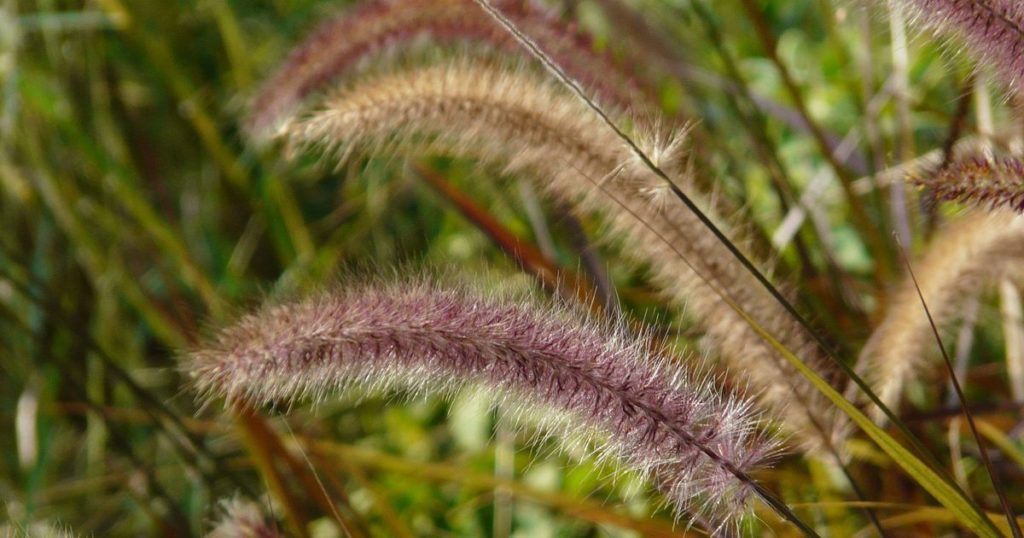
Feather Reed Grass (Calamagrostis acutiflora) is a graceful ornamental grass that lends an elegant, flowing texture to steep slopes. Native to Europe and Asia, it thrives in full sun and well-drained soils, making it excellent for erosion control while adding movement and softness to rugged terrain. I love how its slender, feathery plumes sway gently in the breeze, attracting beneficial insects like ladybugs and ground beetles that may use the clumps for short-term shelter or nesting—a delightful bonus for nature lovers!
Its non-invasive, clumping habit ensures that this grass remains low-maintenance while providing a striking backdrop for more vibrant blooms. The rustling sound of its leaves and the ever-changing play of light and shadow create a dynamic, natural atmosphere that transforms steep slopes into serene, living canvases. For gardeners seeking to combine structure with natural beauty, Feather Reed Grass is a versatile and timeless addition that works wonders in any landscape!
Butterfly Weed

Butterfly Weed (Asclepias tuberosa) is a vibrant, drought-tolerant perennial that adds a splash of brilliant orange to steep slopes while serving as a magnet for pollinators. Native to North America, this plant thrives in full sun and well-drained soils, where its fibrous root system helps anchor loose earth. I’m always thrilled by how its bold, tubular blossoms attract butterflies, bees, and even hummingbirds—some of which use the plant’s sturdy stems as a temporary nesting perch during quiet afternoons!
Its non-invasive nature and low maintenance make Butterfly Weed an excellent choice for gardeners looking to enhance biodiversity on challenging terrains. In addition to its stunning visual appeal, it plays a crucial role in supporting native pollinator populations, making your garden a dynamic, thriving ecosystem. For anyone eager to add both beauty and ecological value to steep slopes, Butterfly Weed is an inspiring and practical option!
Creeping Thyme

Creeping Thyme is a delightful, aromatic groundcover that excels on steep slopes by forming a dense, fragrant carpet of tiny leaves and delicate flowers. Native to the Mediterranean, it thrives in full sun and well-drained, rocky soils, conditions that perfectly mimic its natural habitat. I’m always impressed by how its low, spreading habit not only helps control erosion but also attracts beneficial insects like solitary bees, which sometimes use its mat as a safe nesting area—a subtle yet impactful bonus for your garden!
Its non-invasive growth makes Creeping Thyme ideal for filling in gaps on slopes without overwhelming other species. The herbaceous aroma adds a pleasant sensory experience, deterring some pests while inviting pollinators that enhance your garden’s ecological balance. For gardeners seeking a groundcover that marries beauty, practicality, and a touch of culinary delight, Creeping Thyme is a small wonder that truly stands out on steep landscapes!


